A comprehensive review on polymer matrix composites: material selection, fabrication, and application

Polymer matrix composites have always piqued the curiosity of the scientific, technological communities and are being recognized as the best option for a wide range of engineering applications owing to their superior mechanical qualities, namely stiffness and high specific strength. In addition, these materials offer useful design flexibility and comparatively better fatigue and corrosion resistance than many other materials. These are thus recognized as advanced composite materials due to their superior mechanical properties and comparative ease of fabrication. As a result, manufacturers have turned towards these advanced composites for a wide range of applications in a variety of industries. A manufacturer or designer must choose appropriate constituents of a composite for a particular application while considering all the composite’s properties. This stands as one of the main objectives of this review, i.e. to explore various matrices and reinforcement combinations used for different applications taking their properties into accord. This extensive analysis includes a detailed review of certain selective fabrication techniques. In addition to that, polymer matrix composites’ numerous applications in today’s environment are also discussed, as well as the challenges that they pose in diverse contexts. Through this review, researchers will achieve a better understanding of the significance of these materials and their adaptability in various applications.
This is a preview of subscription content, log in via an institution to check access.
Access this article
Subscribe and save
Springer+ Basic
€32.70 /Month
- Get 10 units per month
- Download Article/Chapter or eBook
- 1 Unit = 1 Article or 1 Chapter
- Cancel anytime
Buy Now
Price includes VAT (France)
Instant access to the full article PDF.
Rent this article via DeepDyve


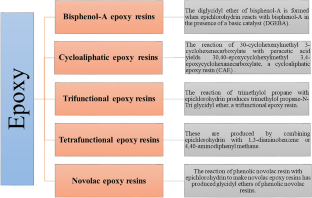
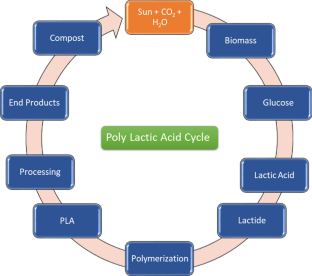
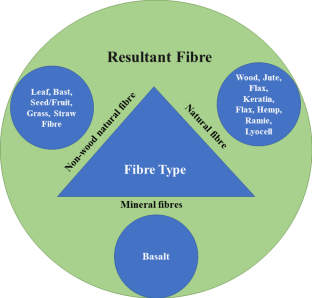

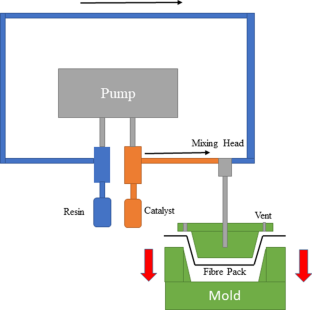

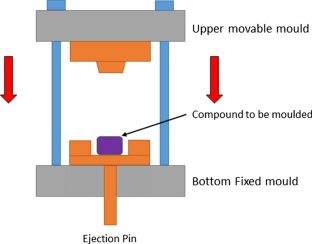
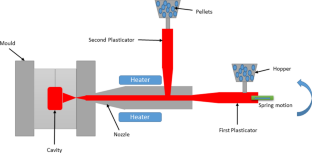
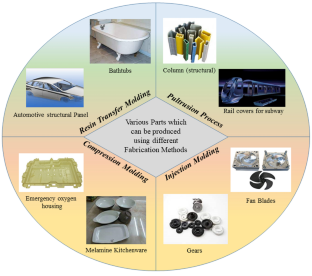
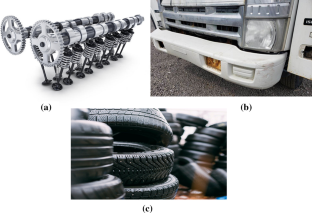

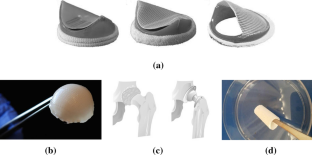
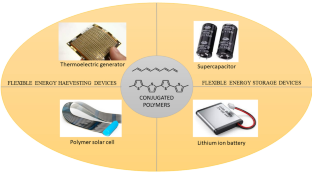

Similar content being viewed by others

High-Performance Polymer-Matrix Composites: Novel Routes of Synthesis and Interface-Structure-Property Correlations
Chapter © 2021

Composites and Nanocomposites
Chapter © 2019

Composites and Nanocomposites
Chapter © 2019
Explore related subjects
References
- Yashas Gowda TG, Sanjay MR, Subrahmanya Bhat K, Madhu P, Senthamaraikannan P, Yogesha B (2018) Polymer matrix-natural fiber composites: an overview. Cogent Eng 5(1):1446667. https://doi.org/10.1080/23311916.2018.1446667ArticleGoogle Scholar
- Friedrich K, Chang L, Haupert F (2011) Current and future applications of polymer composites in the field of tribology. Compos Mater. https://doi.org/10.1007/978-0-85729-166-0_6ArticleGoogle Scholar
- Friedrich K, Breuer U (2015) Multifunctionality of polymer composites: challenges and new solutions. William Andrew, Kidlington Oxford, UK Google Scholar
- Wang RM, Zheng SR, Zheng YPG (2011) Polymer matrix composites and technology. Woodhead Publishing Limited, Cambridge, UK Google Scholar
- Aji IS, Zainudin ES, Abdan K, Sapuan SM, Khairul MD (2013) Mechanical properties and water absorption behaviour of hybridized kenaf/pineapple leaf fibre-reinforced high-density polyethylene composite. J Compos Mater 47(8):979–990. https://doi.org/10.1177/0021998312444147ArticleCASGoogle Scholar
- Rutkowski JV, Levin BC (1986) Acrylonitrile–butadiene–styrene copolymers (ABS): pyrolysis and combustion products and their toxicity- a review of the literature. Fire Mater 10(3–4):93–105. https://doi.org/10.1002/fam.810100303ArticleCASGoogle Scholar
- Callister WD Jr, Rethwisch DG (2020) Fundamentals of materials science and engineering: an integrated approach. John Wiley & Sons Google Scholar
- Campbell FC Jr (2011) Manufacturing technology for aerospace structural materials. Elsevier, Amsterdam, Netherlands Google Scholar
- Kainer KU (2006) Basics of metal matrix composites. Metal matrix composites. Wiley, pp 1–54 Google Scholar
- Xiao L, Lu W, Qin J, Chen Y, Zhang D, Wang M, Zhu F, Ji B (2009) Creep behaviors and stress regions of hybrid reinforced high temperature titanium matrix composite. Compos Sci Technol 69(11–12):1925–1931. https://doi.org/10.1016/j.compscitech.2009.04.009ArticleCASGoogle Scholar
- Stojanovic B, Glisovic J (2021). Application of ceramic matrix composite in automotive industry. https://doi.org/10.1016/B978-0-12-819724-0.00018-5ArticleGoogle Scholar
- Poletti C, Balog M, Schubert T, Liedtke V, Edtmaier C (2008) Production of titanium matrix composites reinforced with SiC particles. Compos Sci Tech 68(9):2171–2177 CASGoogle Scholar
- U.S. Congress, Office of Technology Assessment (1988) Advanced materials by design, OTAE-351 (Washington, DC: U.S. Government Printing Office). Polymer matrix composites pp.73–95. https://www.princeton.edu/~ota/disk2/1988/8801/880106.PDF
- Kainer KU (2006) Custom-made materials for automotive and aerospace engineering. Metal matrix composites. John Wiley & Sons Inc, Hoboken, NJ. https://doi.org/10.1002/3527608117BookGoogle Scholar
- Wang RM, Zheng SR, Zheng YP (2011) Polymer matrix composites and technology. Elsevier Google Scholar
- Even C, Arvieu C, Quenisset JM (2008) Powder route processing of carbon fibres reinforced titanium matrix composites. Comp Sci Tech 68(6):1273–1281. https://doi.org/10.1016/j.compscitech.2007.12.014ArticleCASGoogle Scholar
- Cyriac A (2011) Metal matrix composites: history, status, factors and future. Graduate College of Oklahoma State University Google Scholar
- Callister Jr WD (2007) Materials science and engineering. John Wiley and Sons Inc., New York Google Scholar
- Tsekmes IA, Kochetov R, Morshuis PHF, Smit JJ (2013) Thermal conductivity of polymeric composites: a review. In 2013 IEEE Int Conf on Solid Dielectrics (ICSD) IEEE pp. 678–681
- Wang Y, Chen Z, Yu S, Awuye D, Li B, Liao J, Luo R (2017) Improved sandwich structured ceramic matrix composites with excellent thermal insulation. Comp Part B Eng 129:180–186. https://doi.org/10.1016/j.compositesb.2017.07.068ArticleCASGoogle Scholar
- Talib AAA, Jumahat A, Jawaid M, Sapiai N, Leao AL (2021) Effect of wear conditions, parameters and sliding motions on tribological characteristics of basalt and glass fibre reinforced epoxy composites. Materials 14(3):701. https://doi.org/10.3390/ma14030701ArticleCASGoogle Scholar
- Campbell FC (2010) Structural composite materials. In: Introduction to composite materials. ASM International, pp 1–18
- Sharma AK, Bhandari R, Aherwar A, Rimašauskienė R (2020) Matrix materials used in composites: a comprehensive study. Mater Today Proc 21:1559–1562. https://doi.org/10.1016/j.matpr.2019.11.086ArticleGoogle Scholar
- Qu XH, Zhang L, Mao WU, Ren SB (2011) Review of metal matrix composites with high thermal conductivity for thermal management applications. Progress Nat Sci Mater Int 21(3):189–197. https://doi.org/10.1016/S1002-0071(12)60029-XArticleGoogle Scholar
- Wambua P, Ivens J, Verpoest I (2003) Natural fibres: can they replace glass in fibre reinforced plastics. Compos Sci Technol 63(9):1259–1264 CASGoogle Scholar
- Mahesh V, Joladarashi S, Kulkarni SM (2021) A comprehensive review on material selection for polymer matrix composites subjected to impact load. Def Technol 17(1):257–277. https://doi.org/10.1016/j.dt.2020.04.002ArticleGoogle Scholar
- Wang Z, Xu L, Sun X, Shi M, Liu J (2017) Fatigue behavior of glass fiber reinforced epoxy composites embedded with shape memory alloy wires. Compos Struct 178:311–319. https://doi.org/10.1016/j.compstruct.2017.07.027ArticleGoogle Scholar
- Gupta N, Sano T (2020) Metal and polymer matrix composites. J Mater 2(6):2269–2271. https://doi.org/10.1007/s11837-020-04168-7ArticleGoogle Scholar
- Begley MR, Gianola DS, Ray TR (2019) Bridging functional nanocomposites to robust macroscale devices. Sci 364:6447. https://doi.org/10.1126/science.aav4299ArticleCASGoogle Scholar
- Rajan VS, Govindaraju M, Ramu M, Satheeshkumar V (2020) Influence of metal foam properties on performance of polymer composite spur gear. Mater Today Proc 24:1244–1250. https://doi.org/10.1016/j.matpr.2020.04.439ArticleCASGoogle Scholar
- Ramanathan A, Krishnan PK, Muraliraja R (2019) A review on the production of metal matrix composites through stir casting–Furnace design, properties, challenges, and research opportunities. J Manuf Process 42:213–245. https://doi.org/10.1016/j.jmapro.2019.04.017ArticleGoogle Scholar
- Sam M, Jojith R, Radhika N (2021) Progression in manufacturing of functionally graded materials and impact of thermal treatment- a critical review. J Manuf Process 68:1339–1377. https://doi.org/10.1016/j.jmapro.2021.06.062ArticleGoogle Scholar
- Brechtl J, Li Y, Li K, Kearney L, Nawaz K, Flores-Betancourt A, Thompson M, Rios O, Momen AM (2021) Structural, thermal, and mechanical characterization of a thermally conductive polymer composite for heat exchanger applications. Polymers 13(12):1970. https://doi.org/10.3390/polym13121970ArticleCASGoogle Scholar
- Vishwakarma SK, Pandey P, Gupta NK (2017) Characterization of ABS material: a review. J Res Mech Eng 3(5):13–16 Google Scholar
- Olivera S, Muralidhara HB, Venkatesh K, Gopalakrishna K, Vivek CS (2016) Plating on acrylonitrile–butadiene–styrene (ABS) plastic: a review. J Mater Sci 51(8):3657–3674. https://doi.org/10.1007/s10853-015-9668-7ArticleCASGoogle Scholar
- Kamelian FS, Saljoughi E, Shojaee Nasirabadi P, Mousavi SM (2018) Modifications and research potentials of acrylonitrile/butadiene/styrene (ABS) membranes: a review. Polym Compos 39(8):2835–2846. https://doi.org/10.1002/pc.24276ArticleCASGoogle Scholar
- Manish GD, Sharma S, Akash SM (2018) A Review on testing methods of recycled acrylonitrile butadiene-styrene. Mater Today Proc 5(14):28296–28304. https://doi.org/10.1016/j.matpr.2018.10.113ArticleCASGoogle Scholar
- Vidakis N, Petousis M, Maniadi A, Koudoumas E, Vairis A, Kechagias J (2020) Sustainable additive manufacturing: mechanical response of acrylonitrile-butadiene-styrene over multiple recycling processes. Sustainability 12(9):3568. https://doi.org/10.3390/su12093568ArticleCASGoogle Scholar
- Haghdan S, Smith GD (2015) Natural fiber reinforced polyester composites: a literature review. J Reinf Plast Compos 34(14):1179–1190. https://doi.org/10.1177/0731684415588938ArticleCASGoogle Scholar
- Rouison D, Couturier M, Sain M, MacMillan B, Balcom BJ (2005) Water absorption of hemp fiber/unsaturated polyester composites. Polym Compos 26(4):509–525. https://doi.org/10.1002/pc.20114ArticleCASGoogle Scholar
- Mohd Nurazzi N, Khalina A, Sapuan SM, Dayang Laila AHAM, Rahmah M, Hanafee Z (2017) A review: fibres, polymer matrices and composites. Pertanika J Sci Technol 25(4):1085–1102 Google Scholar
- Skrifvars M (2000) Synthetic modification and characterisation of unsaturated polyesters. Helsinki, Finland Google Scholar
- Levchik SV, Weil ED (2005) Flame retardancy of thermoplastic polyesters—a review of the recent literature. Polym Int 54(1):11–35. https://doi.org/10.1002/pi.1663ArticleCASGoogle Scholar
- Sanadi AR, Prasad SV, Rohatgi PK (1986) Sunhemp fibre-reinforced polyester. J Mater Sci 21(12):4299–4304. https://doi.org/10.1007/BF01106545ArticleCASGoogle Scholar
- Dhakal HN, Zhang ZY, Richardson MOW (2007) Effect of water absorption on the mechanical properties of hemp fibre reinforced unsaturated polyester composites. Compos Sci Technol 67(7–8):1674–1683. https://doi.org/10.1016/j.compscitech.2006.06.019ArticleCASGoogle Scholar
- Dinakaran K, Ramesh H, Joseph AD, Murugan R, Jothi S (2019) Development and characterization of areca fiber reinforced polymer composite. Mater Today Proc 18:934–940. https://doi.org/10.1016/j.matpr.2019.06.528ArticleCASGoogle Scholar
- Venoor V, Park JH, Kazmer DO, Sobkowicz MJ (2021) Understanding the effect of water in polyamides: a review. Polym Rev 61(3):598–645. https://doi.org/10.1080/15583724.2020.1855196ArticleCASGoogle Scholar
- Heitner HI (1994) Encyclopedia of chemical technology, 4th edn. In: Howe-Grant M (ed) Kroschwitz JI. John Wiley & Sons, pp 11–61 Google Scholar
- Trigo-López M, García JM, Ruiz JAR, García FC, Ferrer R (2002) Aromatic polyamides-encyclopedia of polymer science and technology. John Wiley & Sons, Inc, pp 1–51. https://doi.org/10.1002/0471440264.pst249.pub2BookGoogle Scholar
- US Federal Trade Commission (1995) The textile fiber products identification act, 16 CFR Part 303.7. Federal Register 60:234
- Desio GP (1996) Characterization and properties of polyphthalamide/polyamide blends and polyphthalamide/polyamide/polyolefin blends. J Vinyl Addit Technol 2(3):229–234. https://doi.org/10.1002/vnl.10131ArticleCASGoogle Scholar
- Marchildon K (2011) Polyamides–still strong after seventy years. Macromol React Eng 5(1):22–54. https://doi.org/10.1002/mren.201000017ArticleCASGoogle Scholar
- Holmes DR, Bunn CW, Smith DJ (1955) The crystal structure of polycaproamide: nylon 6. J Polym Sci 17(84):159–177. https://doi.org/10.1002/pol.1955.120178401ArticleCASGoogle Scholar
- Kaya E (2009) Investigation of the relationship between polymer structures and thermal, mechanical, viscoelastic properties. The University of Southern Mississippi Google Scholar
- Jin FL, Li X, Park SJ (2015) Synthesis and application of epoxy resins: a review. J Ind Eng Chem 29:1–11. https://doi.org/10.1016/j.jiec.2015.03.026ArticleCASGoogle Scholar
- Choy IC, Plazek DJ (1986) The physical properties of bisphenol-A-based epoxy resins during and after curing. Polym Sci B Polym Phys 24(6):1303–1320. https://doi.org/10.1002/polb.1986.090240609ArticleCASGoogle Scholar
- May C (ed) (2018) Epoxy resins: chemistry and technology. Routledge. https://doi.org/10.1002/pol.1988.140261212BookGoogle Scholar
- Ahmadi Z (2019) Nanostructured epoxy adhesives: a review. Prog Org Coat 135:449–453. https://doi.org/10.1016/j.porgcoat.2019.06.028ArticleCASGoogle Scholar
- Jayan JS, Saritha A, Joseph K (2018) Innovative materials of this era for toughening the epoxy matrix: a review. Polym Compos 39(S4):E1959–E1986. https://doi.org/10.1002/pc.24789ArticleCASGoogle Scholar
- Park SJ, Jin FL, Lee C (2005) Preparation and physical properties of hollow glass microspheres-reinforced epoxy matrix resins. Mater Sci Eng A 402(1–2):335–340. https://doi.org/10.1016/j.msea.2005.05.015ArticleCASGoogle Scholar
- Jin FL, Park SJ (2006) Thermal properties and toughness performance of hyper branched-polyimide-modified epoxy resins. Polym Sci B Polym Phys 44(23):3348–3356. https://doi.org/10.1002/polb.20990ArticleCASGoogle Scholar
- Yoo MJ, Kim SH, Park SD, Lee WS, Sun JW, Choi JH, Nahm S (2010) Investigation of curing kinetics of various cycloaliphatic epoxy resins using dynamic thermal analysis. Eur Polym J 46(5):1158–1162. https://doi.org/10.1016/j.eurpolymj.2010.02.001ArticleCASGoogle Scholar
- Liu W, Wang Z (2011) Silicon-containing cycloaliphatic epoxy resins with systematically varied functionalities: synthesis and structure/property relationships. Macromol Chem Phys 212(9):926–936. https://doi.org/10.1002/macp.201000779ArticleCASGoogle Scholar
- Park SJ, Kim TJ, Lee JR (2000) Cure behavior of diglycidylether of bisphenol A/trimethylolpropane triglycidylether epoxy blends initiated by thermal latent catalyst. Polym Sci B Polym Phys 38(16):2114–2123. https://doi.org/10.1002/1099-0488(20000815)38:16%3C2114::AID-POLB50%3E3.0.CO;2-8ArticleCASGoogle Scholar
- Kwak GH, Park SJ, Lee JR (2000) Thermal stability and mechanical behavior of cycloaliphatic–DGEBA epoxy blend system initiated by cationic latent catalyst. J Appl Polym Sci 78(2):290–297. https://doi.org/10.1002/1097-4628(20001010)78:2%3c290::AID-APP80%3e3.0.CO;2-9ArticleCASGoogle Scholar
- Jin FL, Park SJ (2008) Impact-strength improvement of epoxy resins reinforced with a biodegradable polymer. Mater Sci Eng A 478(1–2):402–405. https://doi.org/10.1016/j.msea.2007.05.053ArticleCASGoogle Scholar
- Lee MC, Ho TH, Wang CS (1996) Synthesis of tetrafunctional epoxy resins and their modification with polydimethylsiloxane for electronic application. J Appl Polym Sci 62(1):217–225. https://doi.org/10.1002/(SICI)1097-4628(19961003)62:1%3C217::AID-APP25%3E3.0.CO;2-0ArticleCASGoogle Scholar
- Guo B, Jia D, Fu W, Qiu Q (2003) Hygrothermal stability of dicyanate-novolac epoxy resin blends. Polym Degrad Stab 79(3):521–528. https://doi.org/10.1016/S0141-3910(02)00368-3ArticleCASGoogle Scholar
- Park SJ, Seo MK, Lee JR (2000) Isothermal cure kinetics of epoxy/phenol-novolac resin blend system initiated by cationic latent thermal catalyst. J Polym Sci A Polym Chem 38(16):2945–2956. https://doi.org/10.1002/1099-0518(20000815)38:16%3C2945::AID-POLA120%3E3.0.CO;2-6ArticleCASGoogle Scholar
- Hu YS, Prattipati V, Mehta S, Schiraldi DA, Hiltner A, Baer E (2005) Improving gas barrier of PET by blending with aromatic polyamides. Polym 46(8):2685–2698. https://doi.org/10.1016/j.polymer.2005.01.056ArticleCASGoogle Scholar
- Mendiburu-Valor E, Mondragon G, González N, Kortaberria G, Eceiza A, Peña-Rodriguez C (2021) Improving the efficiency for the production of bis-(2-Hydroxyethyl) terephtalate (BHET) from the glycolysis reaction of poly ethylene terephtalate (PET) in a pressure reactor. Polym 13(9):1461. https://doi.org/10.3390/polym13091461ArticleCASGoogle Scholar
- Nisticò R (2020) Polyethylene terephthalate (PET) in the packaging industry. Polym Test 90:106707. https://doi.org/10.1016/j.polymertesting.2020.106707ArticleCASGoogle Scholar
- Ke Y, Long C, Qi Z (1999) Crystallization, properties, and crystal and nanoscale morphology of PET–clay nanocomposites. J Appl Polym Sci 71(7):1139–1146. https://doi.org/10.1002/(SICI)1097-4628(19990214)71:7%3C1139::AID-APP12%3E3.0.CO;2-EArticleCASGoogle Scholar
- Chang JH, Mun MK, Lee IC (2005) Poly(ethylene terephthalate) nanocomposite fibers by in situ polymerization: the thermomechanical properties and morphology. J Appl Polym Sci 98(5):2009–2016. https://doi.org/10.1002/app.22382ArticleCASGoogle Scholar
- Bizarria MT, Giraldi AL, de Carvalho CM, Velasco JI, d’Avila MA, Mei LH (2007) Morphology and thermomechanical properties of recycled PET–organoclay nanocomposites. J Appl Polym Sci 104(3):1839–1844. https://doi.org/10.1002/app.25836ArticleCASGoogle Scholar
- Visakh PM (2015) Polyethylene terephthalate: blends, composites, and nanocomposites–state of art, new challenges, and opportunities. PET Blend Comp Nanocomp. https://doi.org/10.1016/B978-0-323-31306-3.00001-4ArticleGoogle Scholar
- Letcher T, Rankouhi B, Javadpour S (2015) Experimental study of mechanical properties of additively manufactured ABS plastic as a function of layer parameters. In ASME Int Mech Eng Congress Expo 57359:V02AT02A018. American Society of Mechanical Engineers
- Praseetha S, BT M, Anusuya S (2019) Storage and security Issues of medical Images using cloud platform C. Server meant for Security. Int J Innov Technol Explor Eng 8(12):977–980 Google Scholar
- Djukic S, Bocahut A, Bikard J, Long DR (2020) Mechanical properties of amorphous and semi-crystalline semi-aromatic polyamides. Heliyon 6(4):e03857. https://doi.org/10.1016/j.heliyon.2020.e03857ArticleGoogle Scholar
- Xiao W, Yu H, Han K, Yu M (2005) Study on PET fiber modified by nanomaterials: improvement of dimensional thermal stability of PET fiber by forming PET/MMT nanocomposites. J Appl Polym Sci 96(6):2247–2252. https://doi.org/10.1002/app.21703ArticleCASGoogle Scholar
- Daramola OO, Akintayo OS (2017) Mechanical properties of epoxy matrix composites reinforced with green silica particles. Ann Fac Eng Hunedoara 15(4):167–174 CASGoogle Scholar
- Fernandes AC, Del Vecchio CJM, Castro GAV (1999) Mechanical properties of polyester mooring cables. Int J Offshore Polar Eng 9:03 Google Scholar
- Kiskan B, Yagci Y (2020) The journey of phenolics from the first spark to advanced materials. Isr J Chem 60(1–2):20–32. https://doi.org/10.1002/ijch.201900086ArticleCASGoogle Scholar
- Pilato L (2010) Resin chemistry. Phenolic resins: a century of progress, Berlin, Heidelberg, pp 41–91. https://doi.org/10.1007/978-3-642-04714-5_4BookGoogle Scholar
- Mohd Nurazzi N, Khalina A, Sapuan SM, Dayang Laila AH, Rahmah M, Hanafee Z (2017) A Review: fibres, polymer matrices and composites. J Sci Technol 25(4):1085–1102 Google Scholar
- Yang W, Jiao L, Wang X, Wu W, Lian H, Dai H (2021) Formaldehyde-free self-polymerization of lignin-derived monomers for synthesis of renewable phenolic resin. Int J Biol Macromol 166:1312–1319. https://doi.org/10.1016/j.ijbiomac.2020.11.012ArticleCASGoogle Scholar
- Zhou J, Yao Z, Chen Y, Wei D, Wu Y, Xu T (2013) Mechanical and thermal properties of graphene oxide/phenolic resin composite. Polym Compos 34(8):1245–1249. https://doi.org/10.1002/pc.22533ArticleCASGoogle Scholar
- Reghunadhan A, Thomas S (2017) Polyurethanes: structure, properties, synthesis, characterization, and applications. PUR Polym. https://doi.org/10.1016/B978-0-12-804039-3.00001-4ArticleGoogle Scholar
- Zia KM, Bhatti HN, Bhatti IA (2007) Methods for polyurethane and polyurethane composites, recycling and recovery: a review. React Funct Polym 67(8):675–692. https://doi.org/10.1016/j.reactfunctpolym.2007.05.004ArticleCASGoogle Scholar
- Akindoyo JO, Beg MD, Ghazali S, Islam MR, Jeyaratnam N, Yuvaraj AR (2016) Polyurethane types, synthesis and applications–a review. RSC Adv 6(115):114453–114482. https://doi.org/10.1039/C6RA14525FArticleCASGoogle Scholar
- Gadhave RV, Srivastava S, Mahanwar PA, Gadekar PT (2019) Recycling and disposal methods for polyurethane wastes: a review. Open J Polym Chem 9(2):39–51. https://doi.org/10.4236/ojpchem.2019.92004ArticleCASGoogle Scholar
- Haponiuk JT, Formela K (2017) PU polymers, their composites, and nanocomposites: state of the art and new challenges. PUR Polym. https://doi.org/10.1016/B978-0-12-804065-2.00001-2ArticleGoogle Scholar
- Khatoon H, Ahmad S (2017) A review on conducting polymer reinforced polyurethane composites. J Ind Eng Chem 53:1–22. https://doi.org/10.1016/j.jiec.2017.03.036ArticleCASGoogle Scholar
- Lin Q, Qu L, Lü Q, Fang C (2013) Preparation and properties of graphene oxide nanosheets/cyanate ester resin composites. Polym Test 32(2):330–337. https://doi.org/10.1016/j.polymertesting.2012.11.014ArticleCASGoogle Scholar
- Hamerton I, Hay JN (1998) Recent technological developments in cyanate ester resins. High Perform Polym 10(2):163–174. https://doi.org/10.1088/0954-0083/10/2/001ArticleCASGoogle Scholar
- Nair CR, Mathew D, Ninan KN (2001) Cyanate ester resins, recent developments. New polymerization techniques and synthetic methodologies. Adv Polym Sci. https://doi.org/10.1007/3-540-44473-4_1ArticleGoogle Scholar
- Hamad K, Kaseem M, Yang HW, Deri F, Ko YG (2015) Properties and medical applications of polylactic acid: a review. Exp Polym Lett 9(5):435–455. https://doi.org/10.3144/expresspolymlett.2015.42ArticleCASGoogle Scholar
- Chang BP, Mohanty AK, Misra M (2020) Studies on durability of sustainable biobased composites: a review. RSC Adv 10(31):17955–17999. https://doi.org/10.1039/C9RA09554CArticleCASGoogle Scholar
- Andrady AL, Pandey KK, Heikkilä AM (2019) Interactive effects of solar UV radiation and climate change on material damage. Photochem Photobiol Sci 18(3):804–825. https://doi.org/10.1039/C8PP90065EArticleCASGoogle Scholar
- Nagarajan V, Mohanty AK, Misra M (2016) Perspective on polylactic acid (PLA) based sustainable materials for durable applications: focus on toughness and heat resistance. ACS Sustainable Chem Eng 4(6):2899–2916 CASGoogle Scholar
- Fang C, Zhang J, Chen X, Weng GJ (2019) A monte carlo model with equipotential approximation and tunneling resistance for the electrical conductivity of carbon nanotube polymer composites. Carbon 146:125–138. https://doi.org/10.1016/j.carbon.2019.01.098ArticleCASGoogle Scholar
- Abidin MSZ, Herceg T, Greenhalgh ES, Shaffer M, Bismarck A (2019) Enhanced fracture toughness of hierarchical carbon nanotube reinforced carbon fibre epoxy composites with engineered matrix microstructure. Compos Sci Technol 170:85–92. https://doi.org/10.1016/j.compscitech.2018.11.017ArticleCASGoogle Scholar
- Hemath M, Mavinkere Rangappa S, Kushvaha V, Dhakal HN, Siengchin S (2020) A comprehensive review on mechanical, electromagnetic radiation shielding, and thermal conductivity of fibers/inorganic fillers reinforced hybrid polymer composites. Polym Compos 41(10):3940–3965. https://doi.org/10.1002/pc.25703ArticleCASGoogle Scholar
- Lim LT, Auras R, Rubino M (2008) Processing technologies for poly (lactic acid). Progress in Polym Sci 33(8):820–852. https://doi.org/10.1016/j.progpolymsci.2008.05.004ArticleCASGoogle Scholar
- Vink ET, Davies S (2015) Life cycle inventory and impact assessment data for 2014 Ingeo™ polylactide production. Ind Biotechnol 11(3):167–180. https://doi.org/10.1089/ind.2015.0003ArticleCASGoogle Scholar
- Murariu M, Dechief AL, Paint Y, Berlier K, Bonnaud L, Dubois P (2008) The green challenge: high performance PLA (nano) composites. Jec comp magazine 45:66–69 Google Scholar
- Ilyas RA, Sapuan SM, Harussani MM, Hakimi MYAY, Haziq MZM, Atikah MSN, Asyraf MRM et al (2021) Polylactic acid (PLA) biocomposite: processing, additive manufacturing and advanced applications. Polymers 13(8):1326. https://doi.org/10.3390/polym13081326ArticleCASGoogle Scholar
- Jojith R, Sam M, Radhika N (2021) Recent advances in tribological behavior of functionally graded composites: a review. Eng Sci Technol Int J. https://doi.org/10.1016/j.jestch.2021.05.003ArticleGoogle Scholar
- Sathish M, Radhika N, Saleh B (2021) A critical review on functionally graded coatings: methods, properties, and challenges. Compos B Eng 225:109278. https://doi.org/10.1016/j.compositesb.2021.109278ArticleCASGoogle Scholar
- Radhika N, Thirumalini S, Shivashankar A (2018) Investigation on mechanical and adhesive wear behavior of centrifugally cast functionally graded copper/SiC metal matrix composite. Trans Indian Inst Met 71(6):1311–1322. https://doi.org/10.1007/s12666-017-1246-zArticleCASGoogle Scholar
- Ponsuriyaprakash S, Udhayakumar P, Pandiyarajan R (2020) Experimental investigation of abs matrix and cellulose fiber reinforced polymer composite materials. J Nat Fibers. https://doi.org/10.1080/15440478.2020.1841065ArticleGoogle Scholar
- Rajak DK, Pagar DD, Kumar R, Pruncu CI (2019) Recent progress of reinforcement materials: a comprehensive overview of composite materials. J Mater Res Technol 8(6):6354–6374. https://doi.org/10.1016/j.jmrt.2019.09.068ArticleCASGoogle Scholar
- Dong YX, Wang Q, Yang CY, Xu WZ, Zhou S, Liu DS, Tian JH (2019) Effect of process parameters on mechanical properties of carbon fiber reinforced abs composites. Key Eng Mater 815:145–215. https://doi.org/10.4028/www.scientific.net/KEM.815.145ArticleGoogle Scholar
- Golub M, Guo X, Jung M, Zhang J (2016) 3D printed ABS and carbon fiber reinforced polymer specimens for engineering education. Springer, Cham, pp 281–285. https://doi.org/10.1007/978-3-319-48768-7_43BookGoogle Scholar
- Sharma V, Goyal M, Jindal P (2017) Preparation, characterization and study of mechanical properties of graphene/ABS nano-composites. Ind J Sci and Tech 10(17):1–5. https://doi.org/10.17485/ijst/2017/v10i17/114414ArticleCASGoogle Scholar
- Papageorgiou DG, Kinloch IA, Young RJ (2017) Mechanical properties of graphene and graphene-based nanocomposites. Prog Mater Sci 90:75–127. https://doi.org/10.1016/j.pmatsci.2017.07.004ArticleCASGoogle Scholar
- Mura A, Adamo F, Wang H, Leong WS, Ji X, Kong J (2019) Investigation about tribological behavior of ABS and PC-ABS polymers coated with graphene. Tribology Int 134:335–340. https://doi.org/10.1016/j.triboint.2019.02.017ArticleCASGoogle Scholar
- Gaitonde VN, Karnik SR, Mata F, Davim JP (2009) Study on some aspects of machinability in unreinforced and reinforced polyamides. J Compos Mater 43(7):725–739. https://doi.org/10.1177/0021998309101298ArticleCASGoogle Scholar
- Yoshihara N (2006) Adjusting the lengths of glass fibers and the relationship between fiber length and mechanical properties for reinforced polyethylene terephthalate. J polym eng 26(6):547–564. https://doi.org/10.1515/POLYENG.2006.26.6.547ArticleGoogle Scholar
- https://matmatch.com/materials/mbas197-polyethylene-terephthalate-reinforced-with-15-glass-fibers-pet-gf15-
- Wang D, Liu Q, Wang Y, Li M, Liu K, Chen J, Qing X (2015) Reinforcement of polyethylene terephthalate via addition of carbon-based materials. Poly (Ethylene Terephthalate) based blends. William Andrew Publishing, Comp and Nanocomp, pp 41–64. https://doi.org/10.1016/B978-0-323-31306-3.00003-8ChapterGoogle Scholar
- Shabafrooz V, Bandla S, Allahkarami M, Hanan JC (2018) Graphene/polyethylene terephthalate nanocomposites with enhanced mechanical and thermal properties. J Polym Res 12:1–2. https://doi.org/10.1007/s10965-018-1621-4ArticleCASGoogle Scholar
- Al-Harthi MA, Bahuleyan BK (2018) Mechanical properties of polyethylene-carbon nanotube composites synthesized by in situ polymerization using metallocene catalysts. Adv Mater Sci. https://doi.org/10.1155/2018/4057282ArticleGoogle Scholar
- Xu A, Wang Y, Xu X, Xiao Z, Liu R (2020) A clean and sustainable cellulose-based composite film reinforced with waste plastic polyethylene terephthalate. Adv Mater Sci Eng. https://doi.org/10.1155/2020/7323521ArticleGoogle Scholar
- Krishnasamy S, Thiagamani SMK, Kumar CM, Nagarajan R, Shahroze RM, Siengchin S, MP ID (2019) Recent advances in thermal properties of hybrid cellulosic fiber reinforced polymer composites. Int J Biol Macromol 141:1–13. https://doi.org/10.1016/j.ijbiomac.2019.08.231ArticleCASGoogle Scholar
- Shanavas S (2014) Mechanical characterization of carbon fibre reinforced epoxy composite. Int J Eng Res Technol 03:01 Google Scholar
- Batabyal A, Nayak RK, Tripathy S (2018) Evaluation of mechanical properties of glass fibre and carbon fibre reinforced polymer composite. J Commun Eng Syst 8(2):66–74 Google Scholar
- Berhanuddin NI, Zaman I, Rozlan SA, Karim MA, Manshoor B, Khalid A, Chan SW, Meng Q (2017) Enhancement of mechanical properties of epoxy/graphene nanocomposite. J Phys Conf Ser 914(1):012036 Google Scholar
- Chatterjee S, Wang JW, Kuo WS, Tai NH, Salzmann C, Li WL, Chu BTT (2012) Mechanical reinforcement and thermal conductivity in expanded graphene nanoplatelets reinforced epoxy composites. Chem Phys Lett 531:6–10. https://doi.org/10.1016/j.cplett.2012.02.006ArticleCASGoogle Scholar
- Mutalikdesai S, Hadapad A, Patole S, Hatti G (2018) Fabrication and mechanical characterization of glass fibre reinforced epoxy hybrid composites using fly ash/nano clay/zinc oxide as filler. IOP Conf Ser Mater Sci Eng (Discontin) 376(1):012061 Google Scholar
- Reddy S P, Rao P C S, Reddy A C, Parmeswar G (2014) Tensile and flexural strength of glass fiber epoxy composites. Int Conf Adv Mater Manuf Technol
- El-Wazery MS, El-Elamy MI, Zoalfakar SH (2017) Mechanical properties of glass fiber reinforced polyester composites. Int J Appl Sci 14(3):121–131 Google Scholar
- Sakin R, Ay I, Yaman R (2008) An investigation of bending fatigue behavior for glass-fiber reinforced polyester composite materials. Mater Des 29(1):212–217. https://doi.org/10.1016/j.matdes.2006.11.006ArticleCASGoogle Scholar
- Pickering KL, Efendy MA, Le TM (2016) A review of recent developments in natural fibre composites and their mechanical performance. Comp Part A Appl Sci Manuf 83:98–112. https://doi.org/10.1016/j.compositesa.2015.08.038ArticleCASGoogle Scholar
- Nurazzi NM, Harussani MM, Aisyah HA, Ilyas RA, Norrrahim MNF, Khalina A, Abdullah N (2021) Treatments of natural fiber as reinforcement in polymer composites—a short review. Funct Comp Struct 3(2):024002. https://doi.org/10.1088/2631-6331/abff36ArticleCASGoogle Scholar
- Mahmud S, Hasan KF, Jahid MA, Mohiuddin K, Zhang R, Zhu J (2021) Comprehensive review on plant fiber-reinforced polymeric biocomposites. J Mater Sci. https://doi.org/10.1007/s10853-021-05774-9ArticleGoogle Scholar
- Hasan KF, Horváth PG, Bak M, Alpár T (2021) A state-of-the-art review on coir fiber-reinforced biocomposites. RSC Advances 11(18):10548–10571. https://www.researchgate.net/publication/350018366
- Ayrilmis N, Jarusombuti S, Fueangvivat V, Bauchongkol P, White RH (2011) Coir fiber reinforced polypropylene composite panel for automotive interior applications. Fiber polym 12(7):919–926. https://doi.org/10.1007/s12221-011-0919-1ArticleCASGoogle Scholar
- Aliotta L, Gigante V, Coltelli MB, Cinelli P, Lazzeri A, Seggiani M (2019) Thermo-mechanical properties of PLA/short flax fiber biocomposites. Appl Sci 9(18):3797. https://doi.org/10.3390/app9183797ArticleCASGoogle Scholar
- More AP (2021) Flax fiber–based polymer composites: a review. Adv Comp Hy Mater. https://doi.org/10.1007/s42114-021-00246-9ArticleGoogle Scholar
- Naveen J, Jawaid M, Amuthakkannan P, Chandrasekar M (2019) Mechanical and physical properties of sisal and hybrid sisal fiber-reinforced polymer composites. Mechanical and physical testing of biocomposites, fibre-reinforced composites and hybrid composites. Woodhead Publishing, pp 427–440. https://doi.org/10.1016/B978-0-08-102292-4.00021-7ChapterGoogle Scholar
- Saxena M, Pappu A, Haque R, Sharma A (2011) Sisal fiber based polymer composites and their applications. Cellulose fibers: Bio-and nano-polym comp. Springer, Berlin, Heidelberg, pp 589–659. https://doi.org/10.1007/978-3-642-17370-7_22ChapterGoogle Scholar
- Koyanagi J, Ogihara S, Nakatani H, Okabe T, Yoneyama S (2014) Mechanical properties of fiber/matrix interface in polymer matrix composites. Adv Comp Mater 23(5–6):551–570. https://doi.org/10.1080/09243046.2014.915125ArticleCASGoogle Scholar
- Jesson DA, John FW (2012) The interface and interphase in polymer matrix composites: effect on mechanical properties and methods for identification. Polym Rev 52(3):321–354. https://doi.org/10.1080/15583724.2012.710288ArticleCASGoogle Scholar
- Reifsnider KL (1994) Modelling of the interphase in polymer-matrix composite material systems. Comp 25(7):461–469. https://doi.org/10.1016/0010-4361(94)90170-8ArticleCASGoogle Scholar
- Dang ZM, Yuan JK, Zha JW, Zhou T, Li ST, Hu GH (2012) Fundamentals, processes and applications of high-permittivity polymer–matrix composites. Progress in Mater Sci 57(4):660–723. https://doi.org/10.1016/j.pmatsci.2011.08.001ArticleCASGoogle Scholar
- Advani SG, Hsiao KT (eds) (2012) Manufacturing techniques for polymer matrix composites (PMCs). Elsevier Google Scholar
- Omrani E, Menezes PL, Rohatgi PK (2016) State of the art on tribological behavior of polymer matrix cposites reinforced with natural fibers in the green materials world. Eng Sci Technol Int J 19(2):717–736. https://doi.org/10.1016/j.jestch.2015.10.007ArticleGoogle Scholar
- Chung DD (2010) Mechanical properties-composite materials: science and applications. Eng Mater Process. https://doi.org/10.1007/978-1-84882-831-5_3ArticleGoogle Scholar
- Du Y, Li D, Liu L, Gai G (2018) Recent achievements of self-healing graphene/polymer composites. Polym 10(2):114. https://doi.org/10.3390/polym10020114ArticleCASGoogle Scholar
- Fiore V, Scalici T, Nicoletti F, Vitale G, Prestipino M, Valenza A (2016) A new eco-friendly chemical treatment of natural fibres: effect of sodium bicarbonate on properties of sisal fibre and its epoxy composites. Compos B Eng 85:150–160. https://doi.org/10.1016/j.compositesb.2015.09.028ArticleCASGoogle Scholar
- Campbell FC (ed) (2003) Manufacturing processes for advanced composites. Elsevier, UK Google Scholar
- Minchenkov K, Vedernikov A, Safonov A, Akhatov I (2021) Thermoplastic pultrusion: a review. Polym 13:180. https://doi.org/10.3390/polym13020180ArticleCASGoogle Scholar
- Vedernikov A, Safonov A, Tucci F, Carlone P, Akhatov I (2020) Pultruded materials and structures: a review. J Compos Mater 54(26):4081–4117. https://doi.org/10.1177/0021998320922894ArticleGoogle Scholar
- Starr TF, Ketel JAAP (2000) Composites and pultrusion: pultrusion for engineers. Woodhead Publishing Limited, England, Cambridge, pp 1–18 Google Scholar
- Fairuz AM, Sapuan SM, Zainudin ES, Jaafar CNA (2015) Pultrusion process of natural fibre-reinforced polymer composites. Manufacturing of Natural Fibre Reinforced Polymer Compossites. Springer, pp 217–231 Google Scholar
- Ben G, Shoji A (2005) Pultrusion techniques and evaluations of sandwich beam using phenolic foam composite. Adv Compos Mater 14(3):277–288. https://doi.org/10.1163/1568551054922629ArticleCASGoogle Scholar
- Bechtold G, Wiedmer S, Friedrich K (2002) Pultrusion of thermoplastic composites-new developments and modelling studies. J Thermoplast Compos Mater 15(5):443–465. https://doi.org/10.1177/0892705702015005202ArticleGoogle Scholar
- Xie J, Wang S, Cui Z, Wu J (2019) Process optimization for compression molding of carbon fiber–reinforced thermosetting polymer. Mater 12(15):2430. https://doi.org/10.3390/ma12152430ArticleCASGoogle Scholar
- Singha AS, Thakur VK (2008) Fabrication and study of lignocellulosic hibiscus sabdariffa fiber reinforced polymer composites. Bio Resour 3(4):1173–1186 Google Scholar
- Thakur VK, Thakur MK (2014) Processing and characterization of natural cellulose fibers/thermoset polymer composites. Carbohydr Polym 109:102–117. https://doi.org/10.1016/j.carbpol.2014.03.039ArticleCASGoogle Scholar
- Maciel LG, do Carmo MA, Azevedo L, Daguer H, Molognoni L, de Almeida MM, Granato D, Rosso ND (2018) Hibiscus sabdariffa anthocyanins-rich extract: chemical stability, in vitro antioxidant and antiproliferative activities. Food Chem Toxicol 113:187–197. https://doi.org/10.1016/j.fct.2018.01.053ArticleCASGoogle Scholar
- Song Y, Gandhi U, Sekito T, Vaidya UK, Vallury S, Yang A, Osswald T (2018) CAE method for compression molding of carbon fiber-reinforced thermoplastic composite using bulk materials. Compos Part A Appl Sci 114:388–397. https://doi.org/10.1016/j.compositesa.2018.09.002ArticleCASGoogle Scholar
- De D, De D, Adhikari B (2004) The effect of grass fiber filler on curing characteristics and mechanical properties of natural rubber. Polym Adv Technol 15(12):708–715. https://doi.org/10.1002/pat.530ArticleCASGoogle Scholar
- Ismail NF, Sulong AB, Muhamad N, Tholibon D, MdRadzi MK, Wanlbrahim WAS (2015) Review of the compression moulding of natural fiber-reinforced thermoset composites: material processing and characterisations. Pertanika J Trop Agric Sci 38(4):533–547 Google Scholar
- Park CH, Lee WI (2012) Compression molding in polymer matrix composites. Manufacturing Techniques for Polymer Matrix Composites (PMCs). Elsevier, pp 47–94. https://doi.org/10.1533/9780857096258.1.47ChapterGoogle Scholar
- Zabrocki K, Tiburtius C, Doring J, Richter K, inventors; Bayer AG, assignee (1985) Glass-fiber-reinforced ABS-molding compositions. United States patent US 4,547,533
- Advani SG, Hsiao K-T (eds) (2012) Manufacturing techniques for polymer matrix composites (PMCs). Woodhead Publishing Limited, UK Google Scholar
- Cansever CC (2007) Effects of injection molding conditions on the mechanical properties of polyamide/glass fiber composites [M.S.–Master of Science]. Middle East Technical University
- Sambale AK, Schöneich M, Stommel M (2017) Influence of the processing parameters on the fiber-matrix-interphase in short glass fiber-reinforced thermoplastics. Polym 9(6):221. https://doi.org/10.3390/polym9060221ArticleCASGoogle Scholar
- Parker G (2001) Encyclopedia of materials: science and technology. In: Encyclopedia of materials: science, pp 3703–3707. hthttp://eprints.soton.ac.uk/id/eprint/259958
- Park SJ, Seo MK (2011) Intermolecular force. Interface. Sci Technol 18:1–57. https://doi.org/10.1016/B978-0-12-375049-5.00001-3ArticleGoogle Scholar
- Cadei JMC (2003) Fatigue of FRP composites in civil engineering applications. Fatigue in Composites. Elsevier, pp 658–685 Google Scholar
- Ravichandran M, Balasubramanian M, Chairman CA, Pritima D, Dhinakaran V, Stalin B (2020) Recent developments in polymer matrix composites–a review. IOP Conf Series: Mater Sci and Eng 988(1):012096. https://doi.org/10.1088/1757-899X/988/1/012096ArticleCASGoogle Scholar
- Friedrich K, Almajid AA (2013) Manufacturing aspects of advanced polymer composites for automotive applications. Appl Compos Mater 20(2):107–128. https://doi.org/10.1007/s10443-012-9258-7ArticleCASGoogle Scholar
- Srivastava V, Srivastava R (2013) Advances in automotive polymer applications and recycling. Int J Innov 2(3):744–746 Google Scholar
- Namata S (2015) Using polymers as the main material in engine blocks and components. J Appl Mech Eng 4:182 Google Scholar
- Pradeep SA, Iyer RK, Kazan H, Pilla S (2017) Automotive applications of plastics: past, present, and future. App Plastics Eng Handbook pp.651–673. Doi: https://doi.org/10.1016/B978-0-323-39040-8.00031-6
- Mann D (1999) Automotive plastics and composites: worldwide markets and trends to 2007. Elsevier Google Scholar
- Lyu MY, Choi TG (2015) Research trends in polymer materials for use in lightweight vehicles. Int J Precis 16(1):213–220. https://doi.org/10.1007/s12541-015-0029-xArticleGoogle Scholar
- Munde YS, Ingle RB, Siva I (2018) Investigation to appraise the vibration and damping characteristics of coir fibre reinforced polypropylene composites. Adv Mater Process Technol 4(4):639–650. https://doi.org/10.1080/2374068X.2018.1488798ArticleGoogle Scholar
- Verma D, Gope PC, Shandilya A, Gupta A, Maheshwari MK (2013) Coir fiber reinforcement and application in polymer composites. J Mater Environ Sci 4(2):263–276 CASGoogle Scholar
- Solazzi L, Buffoli A (2019) Telescopic hydraulic cylinder made of composite material. App Compos Mater 26(4):1189–1206. https://doi.org/10.1007/s10443-019-09772-8ArticleCASGoogle Scholar
- Ben Mlik Y, Jaouadi M, Rezig S, Khoffi F, Slah M, Durand B (2018) Kenaf fibre-reinforced polyester composites: flexural characterization and statistical analysis. J Text Inst 109(6):713–722. https://doi.org/10.1080/00405000.2017.1365580ArticleCASGoogle Scholar
- Huang K, Kureemun U, Teo WS, Lee HP (2018) Vibroacoustic behavior and noise control of flax fiber-reinforced polypropylene composites. J Nat Fibers. https://doi.org/10.1080/15440478.2018.1433096ArticleGoogle Scholar
- Saxena M, Pappu A, Haque R, Sharma A (2011) Sisal fiber-based polymer composites and their applications. Cellulose Fibers: Bio and Nano-polymer Composites. Springer, pp 589–659. https://doi.org/10.1007/978-3-642-17370-7_22ChapterGoogle Scholar
- Masuelli MA (2013) Introduction of fibre-reinforced polymers–polymers and composites: concepts, properties and processes. Fiber Reinf Polym Techno Appl Concrete Repair. https://doi.org/10.5772/54629ArticleGoogle Scholar
- Shinde NG, Patel DM (2020) A short review on automobile dashboard materials. In IOP Conf Ser Mater Sci Eng 810(1):012033. https://doi.org/10.1088/1757-899X/810/1/012033ArticleGoogle Scholar
- Mair-Bauernfeind C, Zimek M, Asada R, Bauernfeind D, Baumgartner RJ, Stern T (2020) Prospective sustainability assessment: the case of wood in automotive applications. Int J Life Cycle Assess 25(10):2027–2049. https://doi.org/10.1007/s11367-020-01803-yArticleGoogle Scholar
- Fekete JR, Hall JN (2017) Design of auto body: materials perspective. Automotive Steels. Elsevier, pp 1–18. https://doi.org/10.1016/B978-0-08-100638-2.00001-8ChapterGoogle Scholar
- Gand AK, Chan TM, Mottram JT (2013) Civil and structural engineering applications, recent trends, research and developments on pultruded fiber reinforced polymer closed sections: a review. Front Struct Civ Eng 7(3):227–244. https://doi.org/10.1007/s11709-013-0216-8ArticleGoogle Scholar
- Abdel-Fattah H, El-Hawary MM (1999) Flexural behavior of polymer concrete. Constr Build Mater 13(5):253–262. https://doi.org/10.1016/S0950-0618(99)00030-6ArticleGoogle Scholar
- Jo BW, Park SK, Kim DK (2008) Mechanical properties of nano-MMT reinforced polymer composite and polymer concrete. Constr Build Mater 22(1):14–20. https://doi.org/10.1016/j.conbuildmat.2007.02.009ArticleGoogle Scholar
- Barbuta M, Diaconescu RM, Harja M (2012) Using neural networks for prediction of properties of polymer concrete with fly ash. J Mater Civ Eng 24(5):523–528. https://doi.org/10.1061/(ASCE)MT.1943-5533.0000413ArticleCASGoogle Scholar
- Giusca R, Corobceanu V (2010) New technologies for strengthening damaged reinforced concrete structures. Curr Sci 96(6):829–833 Google Scholar
- Bărbuţă M, Harja M, Baran I (2010) Comparison of mechanical properties for polymer concrete with different types of filler. J Mater Civ Eng 22(7):696–701. https://doi.org/10.1061/(ASCE)MT.1943-5533.0000069ArticleCASGoogle Scholar
- Rajkumar A, Madhavaraj K, Umapathy U (2016) Behaviour of concrete filled pvc plastic tubes (CFPT) placed in columns. Int J Eng Res Technol 4:25 Google Scholar
- Frollini E, Silva CG, Ramires EC (2013) Phenolic resins as a matrix material in advanced fiber-reinforced polymer (FRP) composites. Advanced FRP Composites for Structural Applications. Elsevier, pp 7–43 Google Scholar
- Choi MH, Jeon BH, Chung IJ (2000) The effect of coupling agent on electrical and mechanical properties of carbon fiber/phenolic resin composites. Polymer 41(9):3243–3252. https://doi.org/10.1016/S0032-3861(99)00532-7ArticleCASGoogle Scholar
- Ulery BD, Nair LS, Laurencin CT (2011) Biomedical applications of biodegradable polymers. J Polym Sci B Polym Phys 49(12):832–864. https://doi.org/10.1002/polb.22259ArticleCASGoogle Scholar
- Williams DF (1999) The Williams dictionary of biomaterials. Liverpool University Press Google Scholar
- Pj JF, Arun KJ, Navas AA, Joseph I (2018) Biomedical applications of polymers—an overview. Macromolecules 28(4):939–944. https://doi.org/10.19080/CTBEB.2018.15.555909ArticleGoogle Scholar
- Bernacca GM, O’Connor B, Williams DF, Wheatley DJ (2002) Hydrodynamic function of polyurethane prosthetic heart valves: influences of Young’s modulus and leaflet thickness. Biomater 23(1):45–50. https://doi.org/10.1016/S0142-9612(01)00077-1ArticleCASGoogle Scholar
- Ghanbari H, Viatge H, Kidane AG, Burriesci G, Tavakoli M, Seifalian AM (2009) Polymeric heart valves: new materials, emerging hopes. Trends Bio Technol 27(6):359–367. https://doi.org/10.1016/j.tibtech.2009.03.002ArticleCASGoogle Scholar
- Strohbach A, Busch R (2015) Polymers for cardiovascular stent coatings. Int J Polym Sci. https://doi.org/10.1155/2015/782653ArticleGoogle Scholar
- Wasyłeczko M, Sikorska W, Chwojnowski A (2020) Review of synthetic and hybrid scaffolds in cartilage tissue engineering. Membranes 10(11):348. https://doi.org/10.3390/membranes10110348ArticleCASGoogle Scholar
- Salernitano E, Migliaresi C (2003) Composite materials for biomedical applications: a review. J Appl Biomater 1(1):3–18 CASGoogle Scholar
- Ravi S, Chaikof EL (2010) Biomaterials for vascular tissue engineering. Regen Med 5(1):107–120. https://doi.org/10.2217/rme.09.77ArticleCASGoogle Scholar
- Singha P, Locklin J, Handa H (2017) A review of the recent advances in antimicrobial coatings for urinary catheters. Acta Biomater 50:20–40. https://doi.org/10.1016/j.actbio.2016.11.070ArticleCASGoogle Scholar
- Venkatesan N, Shroff S, Jayachandran K, Doble M (2010) Polymers as ureteral stents. J Endourol 24(2):191–198 Google Scholar
- Gavasane AJ, Pawar HA (2014) Synthetic biodegradable polymers used in controlled drug delivery system: an overview. J Clin Pharmacol 3(2):1–7. https://doi.org/10.4172/2167-065X.1000121ArticleGoogle Scholar
- Capulli AK, MacQueen LA, Sheehy SP, Parker KK (2016) Fibrous scaffolds for building hearts and heart parts. Adv Drug Deliv Rev 96:83–102. https://doi.org/10.1016/j.addr.2015.11.020ArticleCASGoogle Scholar
- Pok S, Myers JD, Madihally SV, Jacot JG (2013) A multilayered scaffold of a chitosan and gelatin hydrogel supported by a PCL core for cardiac tissue engineering. Acta Biomater 9(3):5630–5642. https://doi.org/10.1016/j.actbio.2012.10.032ArticleCASGoogle Scholar
- Gloria A, De Santis R, Ambrosio L (2010) Polymer-based composite scaffolds for tissue engineering. J Appl Biomater 8(2):57–67 CASGoogle Scholar
- Chong EJ, Phan TT, Lim IJ, Zhang YZ, Bay BH, Ramakrishna S, Lim CT (2007) Evaluation of electrospun PCL/gelatin nanofibrous scaffold for wound healing and layered dermal reconstitution. Acta Biomater 3(3):321–330. https://doi.org/10.1016/j.actbio.2007.01.002ArticleCASGoogle Scholar
- Gatenholm P, Klemm D (2010) Bacterial nanocellulose as a renewable material for biomedical applications. MRS Bull 35(3):208–213. https://doi.org/10.1557/mrs2010.653ArticleCASGoogle Scholar
- Putra A, Kakugo A, Furukawa H, Gong JP, Osada Y (2008) Tubular bacterial cellulose gel with oriented fibrils on the curved surface. Polym 49(7):1885–1891. https://doi.org/10.1016/j.polymer.2008.02.022ArticleCASGoogle Scholar
- Tang J, Bao L, Li X, Chen L, Hong FF (2015) Potential of PVA-doped bacterial nano-cellulose tubular composites for artificial blood vessels. J Mater Chem B 3(43):8537–8547. https://doi.org/10.1039/C5TB01144BArticleCASGoogle Scholar
- Zhang Y, Broekhuis A, Stuart MC, Picchioni F (2008) Polymeric amines by chemical modifications of alternating aliphatic polyketones. J Appl Polym Sci 107(1):262–271. https://doi.org/10.1002/app.27029ArticleCASGoogle Scholar
- Zarrintaj P, Ahmadi Z, Saeb MR, Mozafari M (2018) Poloxamer-based stimuli-responsive biomaterials. Mater Today Proc 5(7):15516–15523. https://doi.org/10.1016/j.matpr.2018.04.158ArticleCASGoogle Scholar
- Yang D, Mosadegh B, Ainla A, Lee B, Khashai F, Suo Z, Whitesides GM (2015) Actuators: buckling of elastomeric beams enables actuation of soft machines. Adv Mater 27(41):6305–6305. https://doi.org/10.1002/adma.201570274ArticleGoogle Scholar
- Poole-Warren LA, Patton AJ (2016) Introduction to biomedical polymers and biocompatibility. Biosynthetic polymer for medical applications. Elsevier, pp 3–31. https://doi.org/10.1016/B978-1-78242-105-4.00001-8ChapterGoogle Scholar
- Khan F, Tanaka M, Ahmad SR (2015) Fabrication of polymeric biomaterials: a strategy for tissue engineering and medical devices. J Mater Chem B 3(42):8224–8249. https://doi.org/10.1039/C5TB01370DArticleCASGoogle Scholar
- Theato P, Sumerlin BS, O’Reilly RK, Epps TH III (2013) Stimuli responsive materials. Chem Soc Rev 42(17):7055–7056. https://doi.org/10.1021/ja510147nArticleCASGoogle Scholar
- Muskovich M, Bettinger CJ (2012) Biomaterials-based electronics: polymers and interfaces for biology and medicine. Adv Healthcare Mater 1(3):248–266. https://doi.org/10.1002/adhm.201200071ArticleCASGoogle Scholar
- Blum AP, Kammeyer JK, Rush AM, Callmann CE, Hahn ME, Gianneschi NC (2015) Stimuli-responsive nanomaterials for biomedical applications. J Am Chem Soc 137(6):2140–2154. https://doi.org/10.1021/ja510147nArticleCASGoogle Scholar
- Chang SY, Cheng P, Li G, Yang Y (2018) Transparent polymer photovoltaics for solar energy harvesting and beyond. Joule 2(6):1039–1054. https://doi.org/10.1016/j.joule.2018.04.005ArticleCASGoogle Scholar
- Li G, Zhu R, Yang Y (2012) Polymer solar cells. Nat Photon 6(3):153–161 CASGoogle Scholar
- Zhang Z, Liao M, Lou H, Hu Y, Sun X, Peng H (2018) Conjugated polymers for flexible energy harvesting and storage. Adv Mater 30(13):1704261. https://doi.org/10.1002/adma.201704261ArticleCASGoogle Scholar
- Han M, Wang H, Yang Y (2019) Three-dimensional piezoelectric polymer microsystems for vibrational energy harvesting, robotic interfaces and biomedical implants. Nat Electron 2:26–35. https://doi.org/10.1038/s41928-018-0189-7ArticleGoogle Scholar
- Manish K L, Ujendra K, Saurabh C, Inderdeep S (2016) Secondary processing of polymer matrix composites: challenges and opportunities. Int Conf Latest Develop Mater Manuf QC 2016
- Chawla KK (2012) Composite materials: science and engineering. Springer, New York Google Scholar
- Sands JM, Fink BK, McKnight SH, Newton CH, Gillespie JW Jr, Palmese GR (2001) Environmental issues for polymer matrix composites and structural adhesives. Clean Prod Process 2(4):228–235. https://doi.org/10.1007/s100980000089ArticleGoogle Scholar
- Goodship V (2012) Recycling issues in polymer matrix composites. Failure Mechanisms in PMC. Elsevier, pp 337–367. https://doi.org/10.1533/9780857095329.2.337ChapterGoogle Scholar
- Wu RJ (1998) Some new developing trends for polymer matrix composites. Materials science and engineering serving society. Elsevier, pp 226–231. https://doi.org/10.1016/B978-044482793-7/50053-9ChapterGoogle Scholar
- Gul S, Awais M, Jabeen S, Farooq M (2020) Recent trends in preparation and applications of biodegradable polymer composites. J Renew Mater 8(10):1305–1326. https://doi.org/10.32604/jrm.2020.010037ArticleCASGoogle Scholar
- Maheswari CU, Reddy KO, Muzenda E, Shukla M, Rajulu AV (2013) Mechanical properties and chemical resistance of short tamarind fiber/unsaturated polyester composites: influence of fiber modification and fiber content. Int J Polym Analysis Charact 18(7):520–533. https://doi.org/10.1080/1023666X.2013.816073ArticleCASGoogle Scholar
- Torres FG, Cubillas ML (2005) Study of the interfacial properties of natural fibre reinforced polyethylene. Polym testing 24(6):694–698. https://doi.org/10.1016/j.polymertesting.2005.05.004ArticleCASGoogle Scholar
- Shekar HS, Ramachandra MJMTP (2018) Green composites: a review. Mater Today Proc 5(1):2518–2526. https://doi.org/10.1016/j.matpr.2017.11.034ArticleCASGoogle Scholar
- Benzait Z, Trabzon L (2018) A review of recent research on materials used in polymer–matrix composites for body armor application. J Comp Mater 52(23):3241–3263. https://doi.org/10.1177/0021998318764002ArticleCASGoogle Scholar
- Wang X, Jiang M, Zhou Z, Gou J, Hui D (2017) 3D printing of polymer matrix composites: a review and prospective. Comp Part B Eng 110:442–458 CASGoogle Scholar
Author information
Authors and Affiliations
- Department of Mechanical Engineering, Amrita School of Engineering, Amrita Vishwa Vidyapeetham, Coimbatore, 641112, India S. Kangishwar, N. Radhika, Asad Amaan Sheik, Abhinav Chavali & S. Hariharan
- S. Kangishwar

















